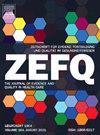[地面上太单薄?德国临终关怀与姑息关怀的地区差异]。
IF 1.7
Q4 HEALTH POLICY & SERVICES
Zeitschrift fur Evidenz Fortbildung und Qualitaet im Gesundheitswesen
Pub Date : 2024-12-01
DOI:10.1016/j.zefq.2024.07.007
引用次数: 0
摘要
导言:近几十年来,门诊和住院病人的临终关怀与姑息关怀服务在德国得到了大幅扩展,日间护理服务也日益得到补充。然而,这些服务在不同地区的提供情况却大相径庭。这些护理机构的可用性在多大程度上与基于当地人口结构的地区需求相匹配,目前还不得而知:在四个泊松回归模型中,对人口统计、就业、收入、教育和健康等领域的人口指标与提供门诊和住院临终关怀工作和姑息关怀服务的数量之间的关系进行了探索性研究。地区一级的累积数据来自联邦建筑、城市事务和空间发展研究所关于德国生活条件的 INKAR 数据库以及德国姑息治疗医学协会的指南。此外,还将通过逻辑回归法找出影响建立日间护理服务的因素:分析对象包括德国的 401 个地区和城市。居民人数、居住密度和居民平均年龄是预测姑息治疗服务数量的最有力因素。在大都市地区,门诊姑息治疗服务和姑息治疗病房往往更常见,而在居民人数较多的地区,无论居住密度如何,门诊临终关怀服务和住院临终关怀病房的数量都会增加。无论是人口指标还是现有的护理结构,回归模型都无法证明半住院护理设施的出现具有显著影响:讨论:地区人口结构只能部分解释德国临终关怀和姑息关怀服务在地区和城市中的不均衡分布。尽管临终关怀和姑息关怀服务有所增加,但在人口密度低、老年居民比例较高的地区,临终关怀和姑息关怀机构较少:结论:未来的医疗保健规划应更多地考虑其他人口特征,而不仅仅是人口数量,以便改善那些因老年居民比例较高等原因而对医疗保健需求较高的地区的医疗保健服务。后续研究应调查哪些人口特征最能说明实际护理需求。本文章由计算机程序翻译,如有差异,请以英文原文为准。
Dünn in der Fläche? Regionale Disparitäten in der Hospiz- und Palliativversorgung in Deutschland
Introduction
Outpatient and inpatient hospice and palliative care services have been significantly expanded in Germany in recent decades and are increasingly being supplemented by day care services. However, the availability of these services varies greatly from region to region. The extent to which the availability of these care structures is matched by a regional need based on local population structures is as yet unknown.
Methods
In four Poisson regression models, the relationship between population indicators from the areas of demographics, employment, income, education and health and the number of offers of outpatient and inpatient hospice work and palliative care is exploratively examined. The cumulated data at district level is drawn from the INKAR database of the Federal Institute for Research on Building, Urban Affairs and Spatial Development on living conditions in Germany and from the guide of the German Association for Palliative Medicine. By means of logistic regression, factors influencing the establishment of day care services will also be identified.
Results
The analysis included 401 districts and cities in Germany. The number of inhabitants, settlement density, and the average age of inhabitants are the strongest predictors of the number of palliative care services. In metropolitan regions, both outpatient palliative care services and palliative care units tend to be more frequently available, while the number of outpatient hospice services and inpatient hospices increases in districts with a higher number of inhabitants regardless of settlement density. The regression model was unable to demonstrate a significant influence on the emergence of semi-inpatient care facilities, neither for the population indicators nor for the existing care structures.
Discussion
Regional population structures can only partially explain the geographically uneven distribution of hospice and palliative care services in districts and cities in Germany. Despite an increase in hospice and palliative care services, fewer hospice and palliative care structures are available in low population density regions that tend to have a higher share of older inhabitants.
Conclusion
Future health care planning should give more consideration to other population characteristics than to population size alone in order to improve care in regions with higher care needs that are, for example, due to a higher proportion of older residents. Subsequent studies should investigate which population characteristics can best describe the actual care needs.
求助全文
通过发布文献求助,成功后即可免费获取论文全文。
去求助
来源期刊

Zeitschrift fur Evidenz Fortbildung und Qualitaet im Gesundheitswesen
HEALTH POLICY & SERVICES-
CiteScore
1.90
自引率
18.20%
发文量
129
 求助内容:
求助内容: 应助结果提醒方式:
应助结果提醒方式:


